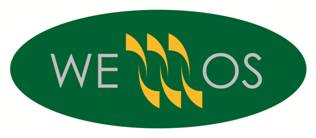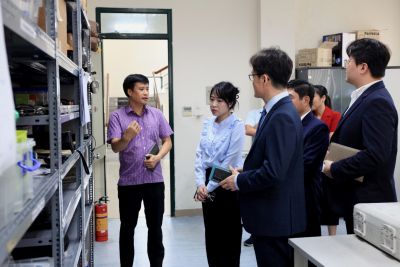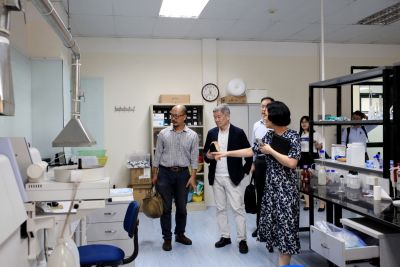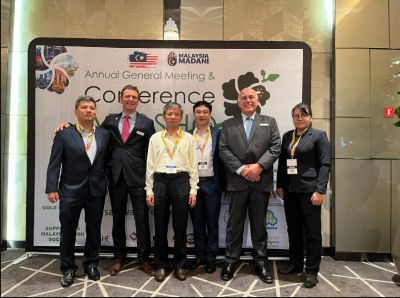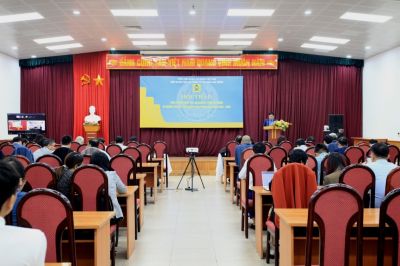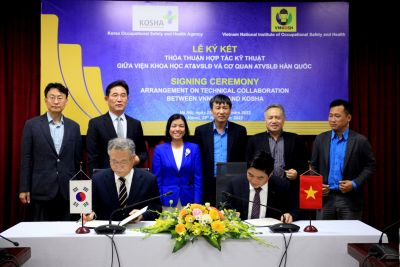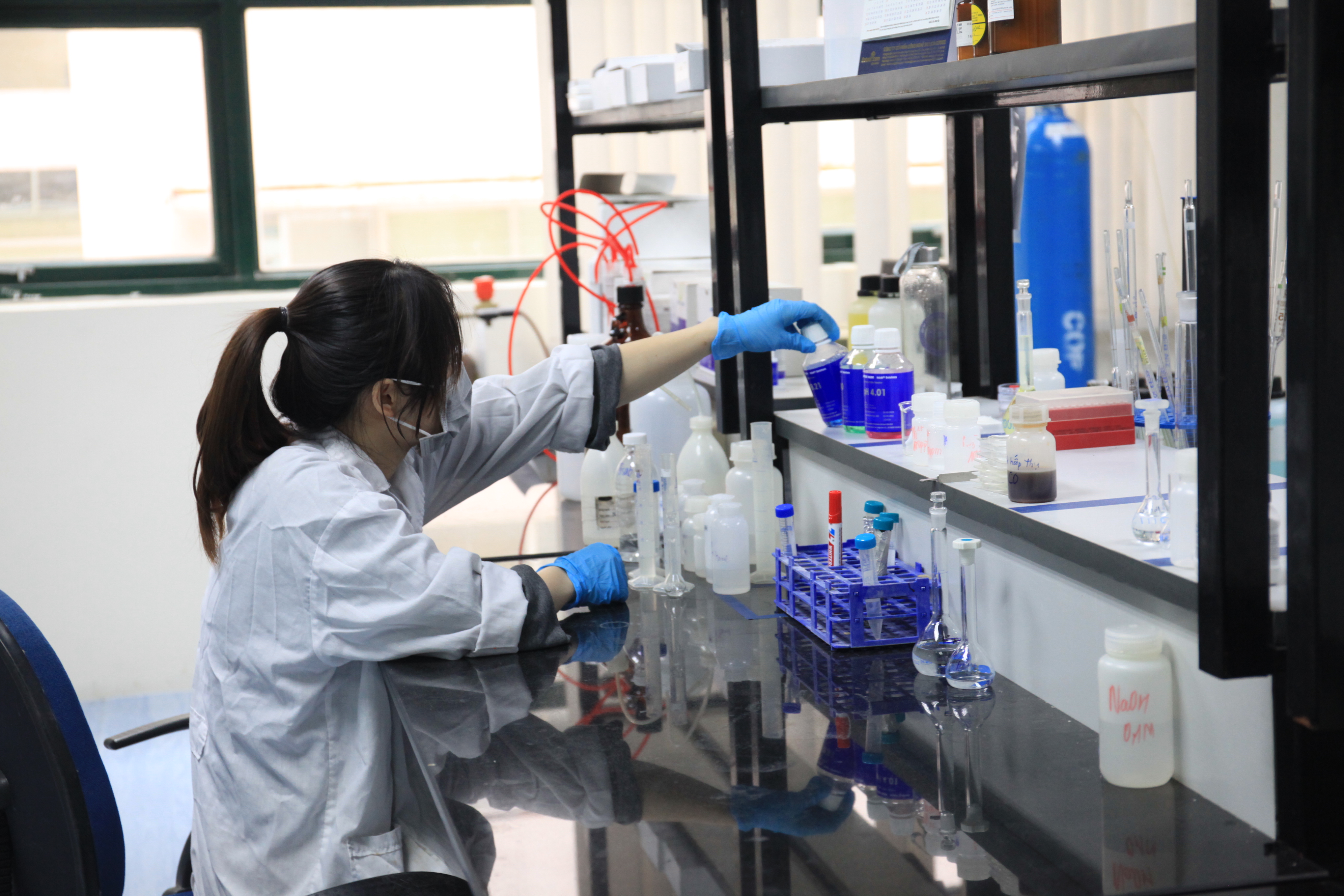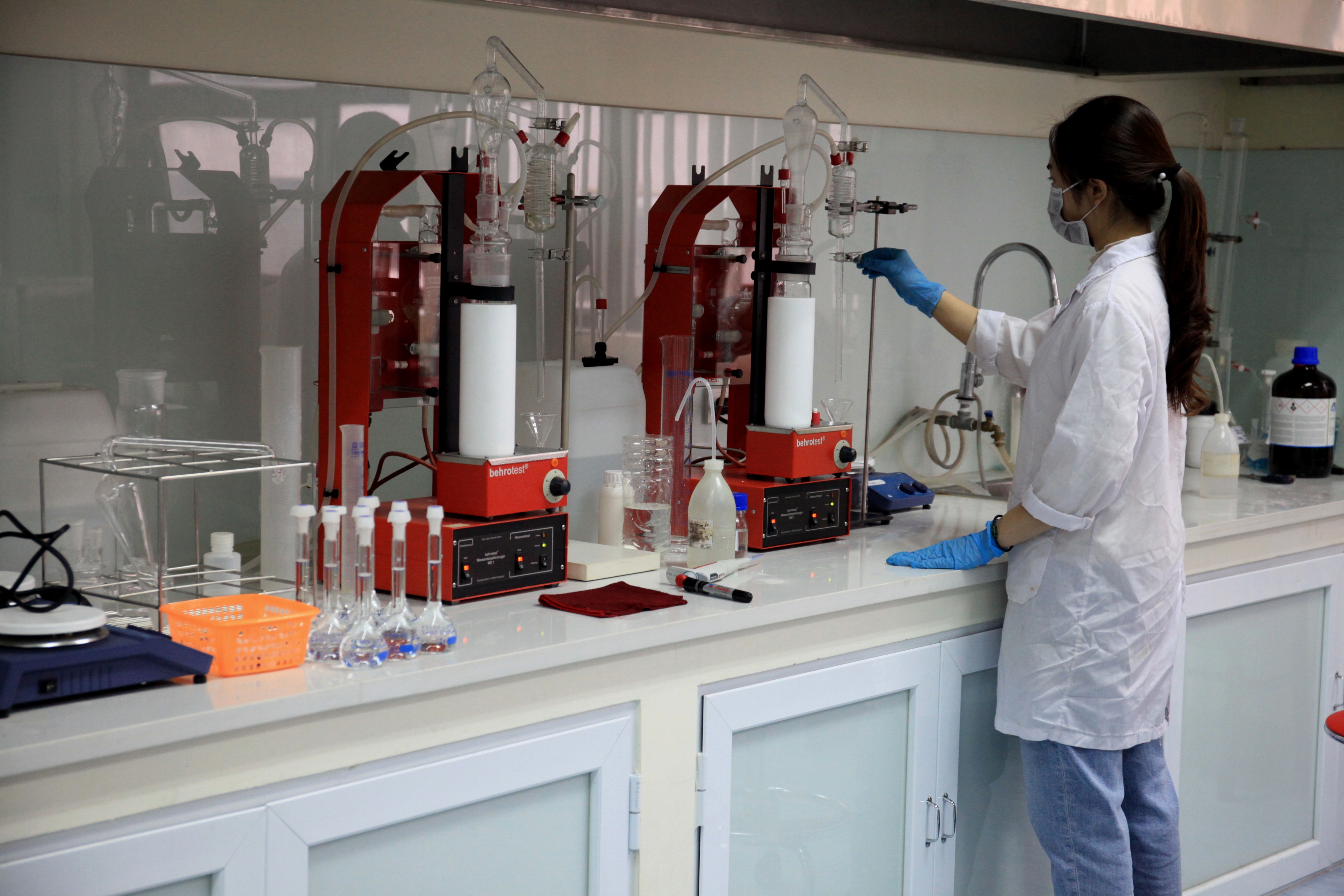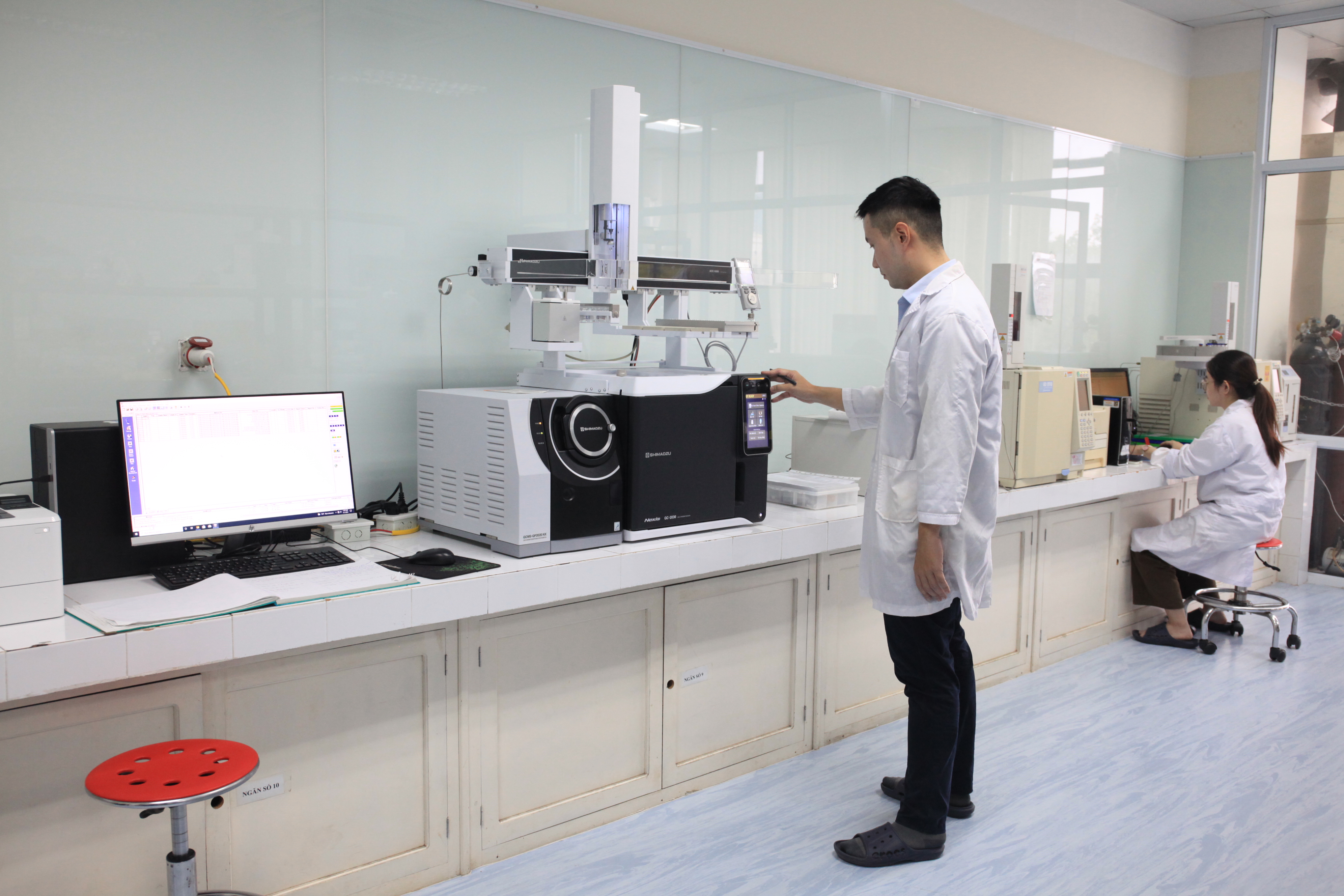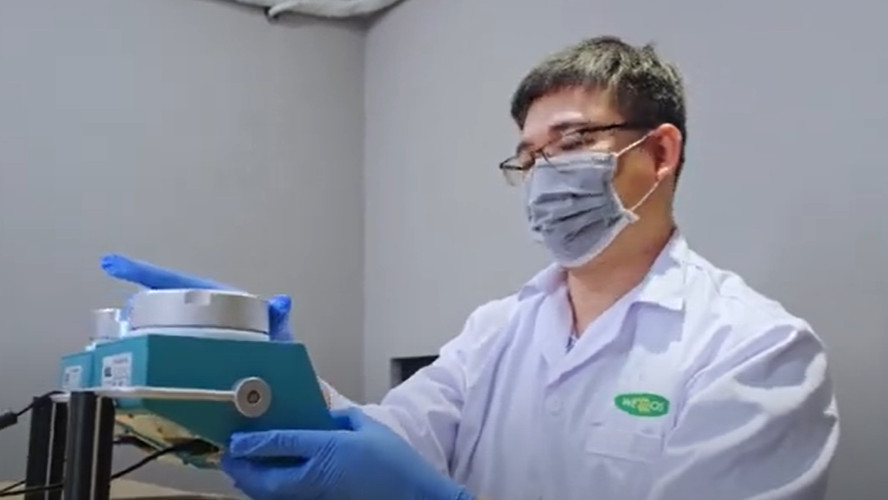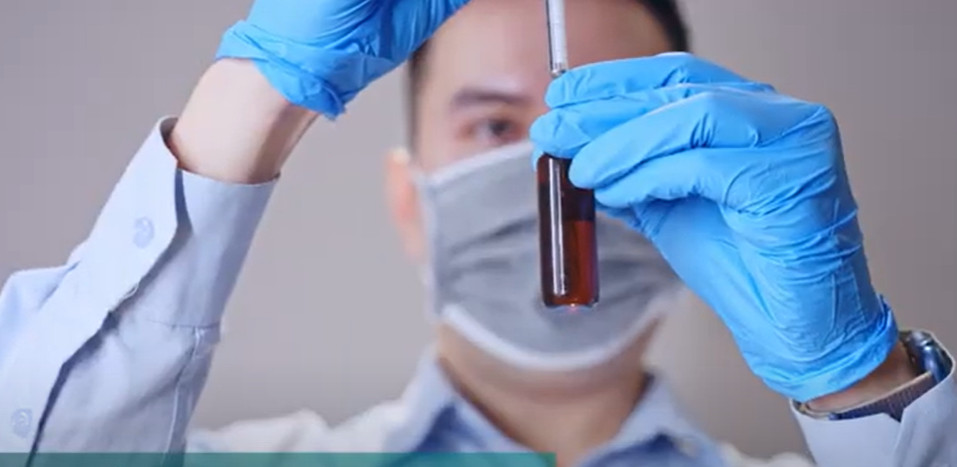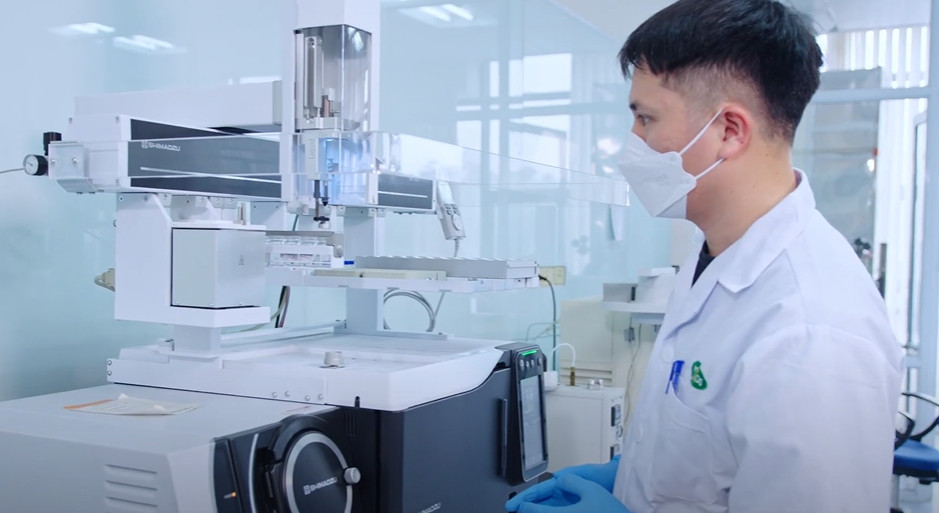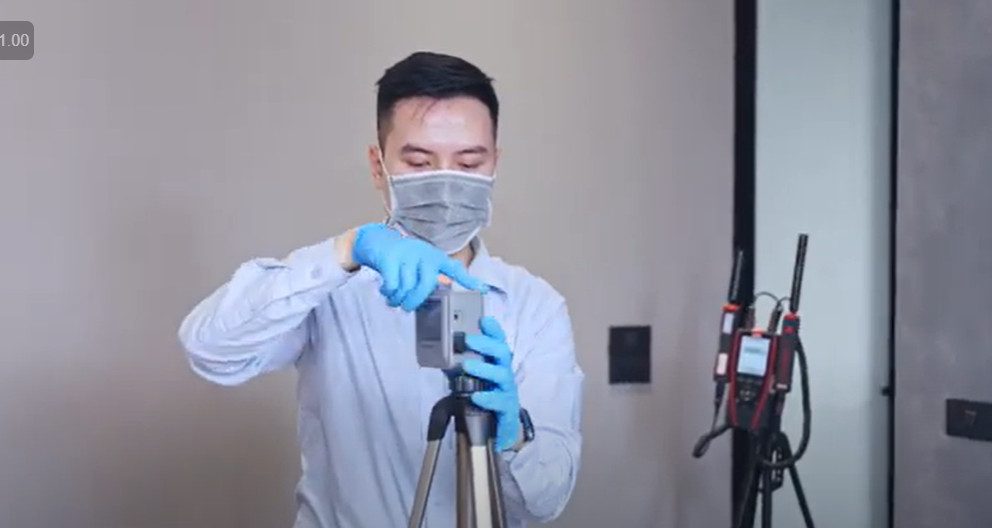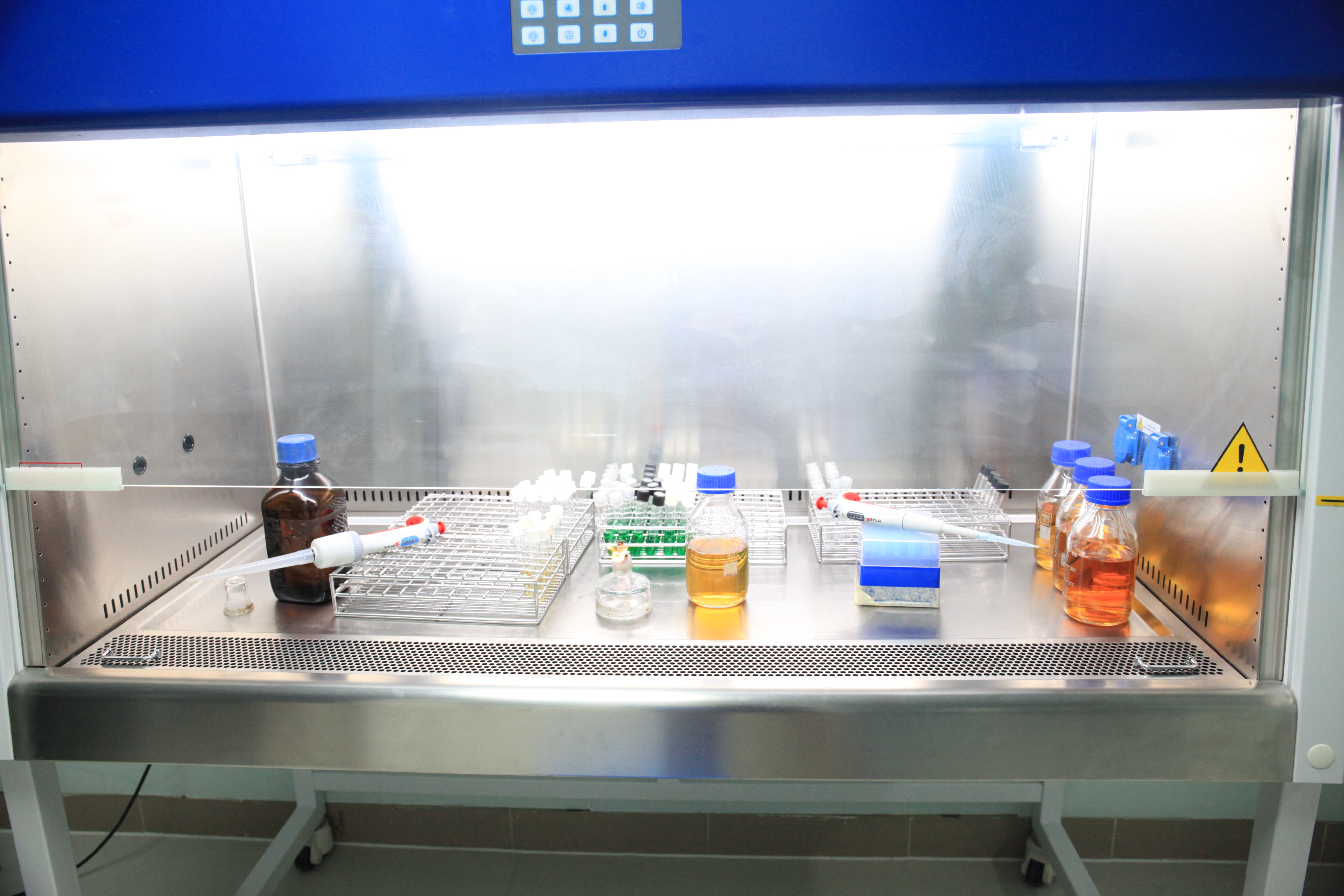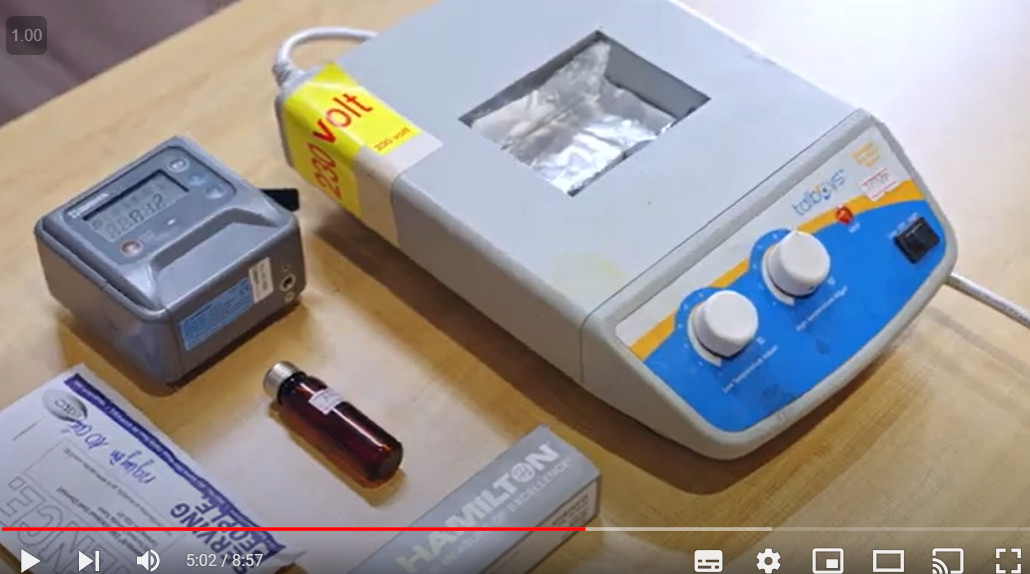WEMOS offers professional services on occupational safety and health and environment. Our services include:
1. Working environment monitoring:
- Measuring, sampling, and monitoring of working environment parameters that might cause adverse effects on workers:
+ Microclimate parameters: temperature, humidity, air velocity and heat radiation intensity.
+ Physical parameters: Noise, vibration, illuminance, UV radiation, ionizing and X-ray radiation, industrial frequency and high frequency electromagnetic field intensity, radon.
+ Particulate matter: silica dust, asbestos dust, cotton dust, coal dust and other organic and inorganic non-silica dust, PM2.5, PM10.
+ Chemical pollutants in the working air: CO, CO2, SO2, NO2, O3, VOCs, PAHs, heavy metals, welding fumes, etc. using methods of ISO/IEC, NIOSH (NMAM), OSHA, ASTM, US EPA, etc.
- Assessment of occupational exposure to hazardous agents: pathogens, allergens, solvents, chemicals, etc.
- Assessment of occupational psychology and physiology such as psychological burden and physical stress; ergonomic assessment in the workplace.
- Performing work assessment and classification based on working conditions.
- Conducting work assessment to propose amendments to the list of arduous, hazardous, and dangerous occupations and works.
- Performing working environment monitoring in compliance with technical standards, customer requirements and current laws and regulations.
* Providing consulting services to develop:
1. Annual Working Environment Monitoring Report
2. Labor Hygiene Dossier
3. Report on Work Classification Based on Working Conditions According to Circular No. 29/2021/TT-BLDTBXH
2. Environmental monitoring:
Performing environmental monitoring according to and in compliance with Vietnam National Technical Regulations, including:
- Monitoring of air quality, soils and water quality (surface water, ground water and marine water).
- Emissions monitoring.
- Sampling and analyzing the composition of wastewater, waste sludge, solid and hazardous waste.
- Sampling and analyzing the composition of sediment.
- Sampling and analyzing the composition of rainwater.
- Sampling and analyzing the composition of bottled/packaged natural mineral waters and drinking waters.
- etc.
* Providing consulting services to develop:
1. Periodic environment monitoring reports (quarterly, annually) in compliance with laws and regulations.
2. Environmental quality assessment report following customer orders.
3. Evaluating reports of the performance of environmental treatment systems (wastewater treatment system, flue gas treatment system, etc.)
3. Developing Environmental protection dossiers: Preparing environmental documents:
- Strategic environmental assessment (SEA) report.
- Environmental impact assessment (EIA) report.
- Environmental registration dossier.
- Application dossiers for environmental licenses.
4. Other services to improve working conditions:
- Design and fabrication of noise, vibration and radiation protection systems.
- Design and installation of industrial ventilation systems.
- Design and installation of dust collecting systems and industrial air treatment systems.
- Design and installation of industrial lighting systems.
- Ergonomic assessment and consultation on improving working posture and position of workers.
- Providing consultation on improving indoor air quality (IAQ).
**************************
REFERENCES
What is Working Environment Monitoring? Procedure for carrying out the working environment monitoring process?
Working Environment Monitoring involves the observation, measurement/sampling and analysis, and evaluation of various factors in the working environment that can affect the well-being and health of workers and employees. The goal of Working Environment Monitoring is to introduce solutions to minimize the adverse effects of those factors, ensure a safe and healthy work environment, and guarantee compliance with applicable laws and regulations.
Requirements for performing Working Environment Monitoring are specified in Article 18 of the Law on Occupational Safety and Health, Law No. 84/2015/QH13 dated 25 June 2015 - Control of dangerous or harmful factors at the workplace:
- The employer shall inspect and control dangerous or harmful factors at the workplace to introduce technical measures for occupational safety and hygiene and healthcare for employees; and carry out measures for decontamination and sterilization applicable to employees who works in a contaminated or infected place.
- Regarding harmful factors that there are regulations on permitted restrictions to control harmful effect on employees’ health promulgated by the Ministry of Health, the employer shall organize occupational environment monitoring to assess those harmful factors at least once a year. Units in charge of occupational environment monitoring must satisfy requirements for facilities, equipment and personnel.
- Regarding dangerous factors, the employer shall regularly inspect and manage in conformity with technical standards of occupational safety and hygiene, and they must be inspected and assessed at least once a year as prescribed.
- After receiving results of occupational environment monitoring to assess harmful factors and results of inspection, assessment, and management of dangerous factor at the workplace, the employer must:
+ Announce the results to employees where the occupational environment monitoring is carried out and dangerous factors are subject to inspection, assessment, and management.
+ Provide information for trade unions, or competent agencies at their requests.
+ Impose measures for elimination or control of dangerous or harmful factors at the workplace to ensure occupational safety and hygiene and healthcare for employee.
Decree No. 44/2016/ND-CP of the Government dated 15 May 2016 details some articles of the Law on Occupational Safety and Health, including technical inspection of occupational safety, training of occupational safety and health and working environment monitoring. More specific:
Article 35 of Decree No. 44/2016/ND-CP specifies the principles to carry out the working environment monitoring:
* Carrying out the monitoring of all harmful factors listed in the labor hygiene dossier prepared by the labor establishment.
For heavy and dangerous and particularly heavy and dangerous jobs, upon working environment monitoring, it is required to assess the occupational burden and some ergonomic psychophysiological indicators specified in Paragraph 3, Article 33 of this Decree (No. 44/2016/ND-CP).
* The working environment monitoring is done in line with the plan made between the labor establishment and the organization eligible for carrying out the working environment monitoring.
* The working environment monitoring must ensure:
- Implementation during the time the labor establishment is conducting its business and production;
- Sampling by the method of personal sampling and the site of sampling is located at the area potentially affecting the employees;
- For working environment monitoring by the method of quick detection when the result is not sure, the working environment monitoring shall take sample and analyze it by the appropriate method in the standard laboratory.
* The harmful factors need to be observed and assessed and updated in the labor hygiene dossier in the following cases:
- There is a change of technological procedure, production procedure or upon renovation or upgrading of labor establishment but with potential risks of new harmful factors for the employee’s health.
- The working environment monitoring organization makes additional recommendations when carrying out the working environment monitoring;
- As required by the competent state management bodies.
The grounds for developing a working environment monitoring plan
Article 36 of Decree No. 44/2016/ND-CP specifies grounds for developing the working environment monitoring plan:
* The labor hygiene dossier of the labor establishment, business and production procedures and a number of employees working at the Department with harmful factors to determine the number of harmful factors to be observed, a number of samples to be taken and site of sampling for each harmful factor.
* The number of employees performing heavy and dangerous and particularly heavy and dangerous job at the labor establishment.
* Microorganic, heterotopic, allergic and cancer factors and other harmful factors that potentially affect the employees’ health but have not yet determined in the labor hygiene dossier.
Procedure for carrying out the working environment monitoring process?
Article 37 of Decree No. 44/2016/ND-CP specifies the procedure for carrying out the working environment monitoring:
* Before carrying out the working environment monitoring, the working environment monitoring organization must ensure all machine and equipment used for working environment monitoring are calibrated in accordance with regulations of law.
* Following the procedures for working environment monitoring properly and fully as committed.
* Truthfully informing the result of working environment monitoring to the employer.
* Where the result of working environment monitoring is not sure, the labor establishment shall:
- Take measures to improve the working conditions and minimize the harmful factors and prevention of occupational diseases.
- Organizes health checkup to early detect occupational diseases and occupation-related diseases for employees in the position of the unsafe working environment.
- Provides gratuity in kind for employees in accordance with regulations of law on labor.
Harmful factors that need to be observed, measured/sampled and analyzed in the working environment monitoring.
Pursuant to the provisions in Appendix 1, Decree 39/2016/ND-CP dated 15 May 2016 and based on the specific situation of labor establishments, the harmful factors that are often present in the periodic working environment monitoring programs include:
* Harmful microclimate agents: Temperature, humidity, wind velocity, thermal radiation.
* Physical agents: Light, noise, vibration, electromagnetic fields at the industrial frequency, high-frequency electromagnetic fields, radioactive agents (X-ray, …), ultraviolet radiation, etc.
* Dust of different types: Total dust, respirable dust, normal dust, silica dust (analyzing concentration of free silica), asbestos dust, metal dust (lead, manganese, cadmium, etc. which should be clarified), coal dust, talc dust, cotton dust, dust of other kinds.
* Poisonous gases (Describe in detail agents to which limits on exposure conform to occupational health regulations), including: Mercury, arsenic, carbon monoxide, benzene and compounds (toluene, xylene), trinitrotoluene (TNT), nicotine, pesticide chemicals, chemical of other kinds.
* Psychological, physiological, and ergonomic agents: Neuropsychological burden assessment, ergonomic assessment.
* Assessment of occupational contact factors: Microbiological agents, allergy or sensitivity-inducing agents, solvents.
Management and keeping of result of working environment monitoring:
Article 38 of Decree No. 44/2016/ND-CP specifies the management and keeping of result of working environment monitoring:
* The result of working environment monitoring is made under the Form No.04, Appendix III of Decree No. 44/2016/ND-CP and is made into 02 copies: 01 copy is sent to the labor establishment signing contract for working environment monitoring and 01 copy is kept at the working environment monitoring organization.
* The time to keep the result of working environment monitoring shall comply with the regulations of law.
Applicable penalties for violations against regulations on working environment monitoring?
According to Clauses 1, 2, 3, 4, 5, 6 and 7, Article 27 of Decree 12/2022/ND-CP of the Government dated 17 January 2022, penalties for violations against regulations on working environment monitoring are specified as follow:
(1) A fine ranging from VND 1.000.000 to VND 2.000.000 shall be imposed on the workplace environmental monitoring service provider for commission of one of the following violations: failing to submit annual reports on business results to competent authorities as prescribed; failing to notify competent authorities of changes in address of its headquarters or branch; failing to participate in training courses on updated knowledge about legislative policies, scientific and technological advances regarding workplace environmental monitoring activities as prescribed by law.
(2) A fine ranging from VND 2.000.000 to VND 5.000.000 shall be imposed upon an employer for failing to inform employees working at sites where the workplace environmental monitoring is conducted, and where inspection, assessment and management of workplace hazards are performed, of results thereof immediately after receipt.
(3) A fine ranging from VND 20.000.000 to VND 40.000.000 shall be imposed upon an employer for failing to conduct workplace environmental monitoring to control health hazards in accordance with regulations of law.
(4) A fine ranging from VND 40.000.000 to VND 60.000.000 shall be imposed upon an employer for colluding with the workplace environmental monitoring service provider to perform fraudulent acts related to workplace environmental monitoring, if not liable to criminal prosecution.
(5) A fine ranging from VND 80.000.000 to VND 120.000.000 shall be imposed upon a workplace environmental monitoring service provider for commission of one of the following violations: colluding with employers to perform fraudulent acts related to workplace environmental monitoring, if not liable to criminal prosecution; carrying out workplace environmental monitoring in contravention of rules and procedures set out in laws.
(6) A fine ranging from VND 120.000.000 to VND 140.000.000 shall be imposed upon a workplace environmental monitoring service provider for producing environmental monitoring results without carrying out environmental monitoring activities as prescribed or providing environmental monitoring services during the period for which its environmental monitoring services are suspended.
(7) A fine ranging from VND 120.000.000 to VND 150.000.000 shall be imposed upon a workplace environmental monitoring service provider for commission of one of the following violations:
- Providing workplace environmental monitoring services before obtaining recognition of eligibility to provide workplace environmental monitoring services in accordance with regulations of law;
- Employing persons who fail to meet standards set out in laws to perform workplace environmental monitoring activities;
- Failing to maintain its recognized satisfaction of eligibility requirements for providing workplace environmental monitoring services during its operation.
Note: According to Clause 1, Article 6 of Decree 12/2022/ND-CP, the penalties specified above shall be imposed upon violating individuals. The fine imposed upon an organization is twice as much as that imposed upon an individual for committing the same administrative violation.
Thus, according to the above regulations, labor establishment fail to conduct monitoring working environment monitoring and control of harmful factors in the working environment shall be imposed upon a fine from 40.000.000 - 80.000.000 VND (applicable for organizations).
What is environmental monitoring? Objects subject to environmental monitoring?
Environmental monitoring: the continuous, periodic or surprise monitoring of environmental components and factors impacting the environment, and waste in a systematic manner in order to provide necessary information in favor of assessment of state of the environment, changes in the environmental quality and adverse impacts on the environment.
Objects subject to environmental monitoring?
Pursuant to Article 108 of the Law on Environmental Protection, Law No. 72/2020/QH14 of the National Assembly dated 17 November 2020, objects subject to environmental monitoring:
- Environmental components to be monitored include:
+ Water, including surface water, groundwater and seawater;
+ Ambient air;
+ Soil and sediments;
+ Biodiversity;
+ Noise, vibration, radiation, light.
- Waste sources, waste and pollutants to be monitored include:
+ Wastewater and exhaust gases;
+ Controlled industrial waste for identifying hazardous waste as prescribed by law;
+ Radioactivity;
+ Persistent pollutants that are released into and accumulate in the environment;
+ Other pollutants.
What are the regulations for wastewater monitoring? Industrial dust and exhaust gas monitoring?
Pursuant to Article 111 of the Law on Environmental Protection dated 17 November 2020, the regulations for wastewater monitoring:
- Subjects required to carry out periodic wastewater monitoring include:
+ Dedicated areas for production, business operation and service provision and industrial clusters that discharge wastewater into the environment;
+ Investment projects and businesses that discharge wastewater into the environment at a large flow rate.
(1) Wastewater monitoring The periodic wastewater monitoring is specified in Clause 3, Article 97, Section 2, Decree 08/2022/ND-CP dated 10 January 2022 detailing several articles of the Law on Environmental Protection.
a) Periodic wastewater monitoring parameters and frequency are specified in the environmental license. Monitoring parameters shall be determined on the following grounds: environmental technical regulation on wastewater; type of production, business and service; fuels, raw materials and chemicals used; production technology, waste treatment technology; parameters in excess of the permissible limits specified in the environmental technical regulation detected through inspection and imposition of penalties for violations against laws on environment; at the request of a project owner or business owner.
The licensing authority must not request the monitoring of other parameters without relying on the grounds mentioned in this point;
b) For a project or business which is continuously operating: wastewater shall be monitored every 03 months in the case where an EIA is required and every 06 months in the remaining cases.
For a project or business operating on a seasonal basis and required to carry out EIA: wastewater shall be monitored on one occasion if it operates on a seasonal basis for less than 03 months; 02 times if it operates on a seasonal basis for more than 03 months to 06 months; 03 times if it operates on a seasonal basis for more than 06 months to less than 09 months; 04 times if it operates on a seasonal basis for more than 09 months; the interval between two monitoring efforts must be at least 03 months.
For a project or business operating on a seasonal basis but not required to carry out EIA: wastewater shall be monitored at least once if it operates on a seasonal basis for less than 06 months; 02 times if it operates on a seasonal basis for more than 06 months; the interval between two monitoring efforts must be at least 06 months.
Regarding the parameter total organochlorine pesticides, total organophosphorus pesticides, total Polychlorinated Biphenyls (PCBs), dioxin and easily absorbed organic halogens (if any), wastewater must be monitored every year in all abovementioned cases.
(2) Industrial dust and exhaust gas monitoring Pursuant to Article 112 of the Law on Environmental Protection, industrial dust and exhaust gas monitoring is specified as follow:
- Subjects required to carry out periodic monitoring of industrial dusts and exhaust gases include investment projects and businesses discharging dusts and exhaust gases into the environment at large flow rates.
- The monitoring of industrial dusts and exhaust gases must comply with regulations on time, frequency and parameters as prescribed by law. The parameters that have been automatically and continuously monitored are not required to be periodically monitored.
The periodic monitoring of dust and industrial emissions is specified in Clause 4, Article 98, Section 2, Decree 08/2022/ND-CP dated 10 January 2022 detailing several articles of the Law on Environmental Protection.
a) Periodic dust and industrial emission monitoring parameters and frequency are specified in the environmental license. Dust and industrial emission monitoring parameters shall be determined on the following grounds: environmental technical regulation; type of production, business and service; fuels, raw materials and chemicals used; production technology, waste treatment technology; parameters in excess of the permissible limits specified in the environmental technical regulation detected through inspection and imposition of penalties for violations against laws on environment; at the request of a project owner or business owner.
The licensing authority must not request the monitoring of other parameters without relying on the grounds mentioned in this point;
b) For a project or business which is continuously operating and required to carry out EIA: dust and industrial emissions shall be monitored every 06 months for the parameters: heavy metals and organic compounds (if any), every year for the dioxin/furan parameter (if any) and every 03 months for the remaining parameters.
For a project or business which is continuously operating and not required to carry out EIA: dust and industrial emissions shall be monitored every year for the parameters: heavy metals, organic compounds (if any) and dioxins/furans (if any) and every 06 months for the remaining parameters.
For a project or business operating on a seasonal basis but not required to carry out EIA: for the parameters: heavy metals and organic compounds (if any), dust and industrial emissions shall be monitored on one occasion if it operates on a seasonal basis for more than 06 months, 02 times if it operates on a seasonal basis for more than 06 months; dioxins/furans (if any) shall be monitored every year.
For the remaining parameters, dust and industrial emissions shall be monitored on one occasion if it operates on a seasonal basis for less than 03 months; 02 times if it operates on a seasonal basis for more than 03 months to 06 months; 03 times if it operates on a seasonal basis for more than 06 months to less than 09 months; 04 times if it operates on a seasonal basis for more than 09 months; the interval between two monitoring efforts must be at least 03 months.
For a project or business operating on a seasonal basis but not required to carry out EIA: for the parameters: heavy metals and organic compounds (if any), dust and industrial emissions shall be monitored on one occasion if it operates on a seasonal basis for less than 06 months, 02 times if it operates on a seasonal basis for more than 06 months; dioxins/furans (if any) shall be monitored every year.
For the remaining parameters, dust and industrial emissions shall be monitored on one occasion if it operates on a seasonal basis for less than 06 months; 02 times if it operates on a seasonal basis for more than 06 months; the interval between two monitoring efforts must be at least 06 months.
Parameters and methods for environmental monitoring are determined following:
- Circular No. 10/2021/TT-BTNMT dated 20 June 2021 specify the environmental monitoring techniques and management of environmental monitoring information and data.
- Vietnam national technical regulations on environment.
What is an environmental license? Applications and procedures for issuance of environmental license?
Environmental license: a document issued by a competent authority to an organization or individual (hereinafter referred to as “entity”) involved in business activities, permitting such organization or individual to discharge waste into the environment and manage waste and scrap imported from foreign countries as production materials in accordance with environmental protection requirements as prescribed by law.
Contents of environmental license?
Article 40 of the Law on Environmental Protection dated 17 November 2020 specifies the contents of environmental license as follow:
1) Contents of an environmental license include general information about the investment project, business, dedicated area for production, business operation and service provision or industrial cluster; items to be licensed; environmental protection requirements; validity period; other contents (if any).
2) Items to be licensed include:
a) Source of wastewater; maximum wastewater flow rate; wastewater flow; pollutants and permissible limits of pollutants in the wastewater flow; location and method of wastewater discharge and wastewater receiving bodies;
b) Source of emissions; maximum exhaust gas flow rate; wastewater flow; pollutants and permissible limits of pollutants in the emissions flow; location and method of exhaust gas discharge;
c) Source and permissible limits of noise and vibration;
d) Works and system for hazardous waste treatment; hazardous waste code and quantity of waste permitted for treatment, quantity of hazardous waste transfer stations, operating area with regard to the investment project, hazardous waste treatment service providers;
e) Type and quantity of scrap permitted for import with regard to the investment project, establishments importing scrap from foreign countries as production materials.
3) Environmental protection requirements are as follows:
a) There should be appropriate works and measures for collecting and treating waste and emissions and reducing noise and vibration; in the case of discharge of wastewater into hydraulic structures, environmental protection requirements should be in place to be applied to the source of water discharged into hydraulic structures;
b) Regarding investment projects and hazardous waste treatment providers, there should be measures, systems, works and equipment serving storage, transport, transfer, preliminary processing and treatment which satisfy technical and managerial requirements;
c) Regarding investment projects and establishments importing scrap from foreign countries as production materials, there should be appropriate warehouses and yards for scrap storage; recycling equipment; impurity treatment scheme; re-export scheme;
d) There should be environmental management and supervision plans, environmental emergency prevention and response plans; equipment and works serving environmental emergency prevention and response and environmental monitoring;
e) It is required to manage domestic solid waste, normal industrial solid waste and hazardous waste; improve and remediate environmental; carry out biodiversity offsets according to regulations of law;
f) Other environmental protection requirements (if any).
4) The environmental license shall be valid for:
a) 07 years, regarding group I investment projects;
b) 07 years, regarding businesses, dedicated areas for production, business operation and service provision and industrial clusters operating before the effective date of this Law and applying environmental criteria as Group I investment projects;
c) 10 years, regarding the license holders not mentioned in Points a and b of this Clause;
d) The validity period may be shorter than that specified in Points a, b and c of this Clause at the request of the investment project owners, businesses, investors in construction and commercial operation of infrastructure in dedicated areas for production, business operation and service provision and industrial clusters (hereinafter collectively referred to as “investment project/business owners”).
5) The Minister of Natural Resources and Environment shall promulgate form of the environmental license.
The power to issue environmental license?
Article 41 of the Law on Environmental Protection dated 17 November 2020 specifies the power to issue environmental license as follow:
- The Ministry of Natural Resources and Environment shall issue the environmental license to the following applicants, except for investment projects and establishments classified as state secrets in the field of national defense and security:
+ The projects in Article 39 hereof for which the environmental impact assessment report appraisal result has been approved by the Ministry of Natural Resources and Environment;
+ The projects specified in Article 39 hereof that involve 02 provinces or more or are located within territorial waters to which responsibility of the provincial People’s Committee for administrative management are yet to be assigned; establishments importing scrap from foreign countries as production materials, hazardous waste treatment service providers.
- The Ministry of National Defense and Ministry of Public Security shall issue the environmental license to investment projects and establishments classified as state secrets in the field of national defense and security.
- Provincial People’s Committees shall issue the environmental license to the following obliged applicants, except for the cases specified above:
+ Group II investment projects in Article 39 hereof;
+ Group II investment projects in Article 39 hereof that involve 02 districts or more;
+ The investment projects in Clause 2 Article 39 hereof for which the environmental impact assessment report appraisal result has been approved by the provincial People’s Committee or Ministry of Natural Resources and Environment or ministerial agency.
- District-level People’s Committees shall issue the environmental license to the applicants in Article 39 hereof, except for the cases specified above. Accordingly, the Ministry of Natural Resources and Environment; Ministry of National Defense, Ministry of Public Security; and Provincial People’s Committees will issue environmental license depending on each case as mentioned above.
Applications and procedures for issuance of environmental license?
Article 43 of the Law on Environmental Protection dated 17 November 2020 specifies applications and procedures for issuance of environmental license as follow:
(1) An application for issuance of an environmental license includes:
- An application form;
- A report on proposal for issuance of the environmental license;
- Legal and technical documentation of the investment project, business, dedicated area for production, business operation and service provision or industrial cluster.
(2) Procedures for issuance of the environmental license are as follows:
- An investment project/business owner shall send an application for issuance of the environmental license to the competent authority specified in Article 41 hereof. The application may be submitted in person or by post or through the online public service system;
- The licensing authority shall receive the application and inspect its adequacy and validity; make publicly available contents of the report on proposal for issuance of the environmental license, except for information classified as state secrets or enterprise's secrets as prescribed by law; consult relevant organizations and individuals; carry out a site inspection of the investment project, business, dedicated area for production, business operation and service provision or industrial cluster; carry out appraisal and issue the environmental license.
The sequence of receiving and handling administrative procedures shall be followed in person, by post or through the online public service system at the request of the investment project/business owner;
- If the investment project, business, dedicated area for production, business operation and service provision or industrial cluster discharges wastewater into a hydraulic structure, the licensing authority shall collect written comments and reach an agreement with the regulatory body managing such hydraulic structure before issuing the environmental license;
- If the investment project or business is located within a dedicated area for production, business operation and service provision or industrial cluster, the licensing authority shall collect written comments of the investor in construction and commercial operation of such dedicated area for production, business operation and service provision or industrial cluster before issuing the environmental license.
* Notes: The issuance of an environmental license is based on the appraisal of the proposal report for issuance of the environmental license. The licensing authority shall assemble appraisal councils and inspection teams in accordance with regulations.
What is environmental impact assessment? Projects subject to environmental impact assessment?
What is environmental impact assessment?
Pursuant to Clause 7, Article 3, Law on Environmental Protection dated 17 November 2020, environmental impact assessment (hereinafter referred to as “EIA”) is the process of analyzing, assessing, identifying and predicting environmental impacts of an investment project in order to take measures to reduce adverse impacts on the environment.
Projects subject to EIA?
Article 30, Law on Environmental Protection dated 17 November 2020 stipulates projects subject to EIA include:
Group I investment projects mentioned in Clause 3 Article 28 of the Law on Environmental Protection (Law No. 72/2020/QH14). Group I - investment projects are those that pose a high risk of adverse environmental impacts, including:
1) Large-scale and capacity projects involved in types of production, business and services that are likely to cause environmental pollution; projects providing hazardous waste treatment service; projects involving import of scrap from foreign countries as production materials;
2)Medium-scale and capacity projects involved in types of production, business and services with environmentally sensitive factors that are likely to cause; large-scale and capacity projects not involved in types of production, business and services with environmentally sensitive factors that are likely to cause environmental pollution;
3) Large- or medium-scale projects using land, land with water surface and marine area with environmentally sensitive factors;
4) Large- or medium-scale and capacity projects on extraction of minerals and water resources with environmentally sensitive factors;
5) Projects requiring repurposing of land on at least medium scale with environmentally sensitive factors;
6) Large-scale projects requiring migration and relocation.
Group II investment projects mentioned in Points c, d, dd and e Clause 4 Article 28 of Law on Environmental Protection (Law No. 72/2020/QH14). Group II - investment projects are those that pose a risk of adverse environmental impacts, including:
1) Large- or medium-scale projects using land, land with water surface and marine area with environmentally sensitive factors;
2) Small-scale and capacity projects on extraction of minerals and water resources with environmentally sensitive factors;
3) Small-scale projects requiring repurposing of land with environmentally sensitive factors;
4) Medium-scale projects requiring migration and relocation.
Note: Urgent public investment projects prescribed by the Law on Public Investment shall not be subject to EIA. Capacity of an investment projects involved in a type of production, business or services that is likely to cause environmental pollution specified in the Appendix II of Decree No. 08/2022/NĐ-CP is defined in the proposal for investment project, feasibility study report, economic-technical report or equivalent document of the project classified into 03 types: large, medium and small
(Clause 2, Article 25, Decree 08/2022/ND-CP).
Power to appraise environmental impact assessment report?
Pursuant to Article 35, Law on Environmental Protection (Law No. 72/2020/QH14), the power to appraise EIAR is within the jurisdiction of:
1. The Ministry of Natural Resources and Environment shall organize appraisal of EIARs for the following investment projects, except for the investment projects specified in Clause 2 of this Article:
a) Group I investment projects mentioned in Clause 3 Article 28 of this Law;
b) Group II investment projects in Points c, d, dd and e Clause 4 Article 28 of this Law subject to investment guideline decision or approval by the National Assembly and Prime Minister; investment projects involving 02 provinces or more; investment projects located within territorial waters to which responsibility of the provincial People’s Committee for administrative management are yet to be assigned; investment projects subject to issuance of the mineral mining license, license to extract and use water resources, ocean dumping permit and marine area transfer decision by the Ministry of Natural Resources and Environment.
2. The Ministry of National Defense and Ministry of Public Security shall organize appraisal of EIARs for investment projects classified as state secrets in the field of national defense and security.
3. Provincial People’s Committees shall organize appraisal of EIARs for investment projects within their provinces, except for the investment projects in Clauses 1 and 2 of this Article. Ministries and ministerial agencies shall cooperate with provincial People’s Committees shall appraise EIARs for investment projects subject to investment guideline and decision by such provincial People’s Committees.
For more information about the services, please contact:
Hotline: 0941.042.838
Email: moitruonglaodong@vnniosh.vn
Tel: 024 22172480 / 024 22172473
or leave a message and and we will get back to you as soon as possible
WEMOS offers professional services on occupational safety and health and environment. Our services include:
1. Working environment monitoring:
- Measuring, sampling, and monitoring of working environment parameters that might cause adverse effects on workers:
+ Microclimate parameters: temperature, humidity, air velocity and heat radiation intensity.
+ Physical parameters: Noise, vibration, illuminance, UV radiation, ionizing and X-ray radiation, industrial frequency and high frequency electromagnetic field intensity, radon.
+ Particulate matter: silica dust, asbestos dust, cotton dust, coal dust and other organic and inorganic non-silica dust, PM2.5, PM10.
+ Chemical pollutants in the working air: CO, CO2, SO2, NO2, O3, VOCs, PAHs, heavy metals, welding fumes, etc.
using methods of ISO/IEC, NIOSH (NMAM), OSHA, ASTM, US EPA, etc.
- Assessment of occupational exposure to hazardous agents: pathogens, allergens, solvents, chemicals, etc.
- Assessment of occupational psychology and physiology such as psychological burden and physical stress; ergonomic assessment in the workplace.
- Performing work assessment and classification based on working conditions.
- Conducting work assessment to propose amendments to the list of arduous, hazardous, and dangerous occupations and works.
- Performing working environment monitoring in compliance with technical standards, customer requirements and current laws and regulations.
- Providing consulting services to develop:
1. Annual Working Environment Monitoring Report
2. Labor Hygiene Dossier
3. Report on Work Classification Based on Working Conditions According to Circular No. 29/2021/TT-BLDTBXH
2. Environmental monitoring:
Performing environmental monitoring according to and in compliance with Vietnam National Technical Regulations, including:
- Monitoring of air quality, soils and water quality (surface water, ground water and marine water).
- Emissions monitoring.
- Sampling and analyzing the composition of wastewater, waste sludge, solid and hazardous waste.
- Sampling and analyzing the composition of sediment.
- Sampling and analyzing the composition of rainwater.
- Sampling and analyzing the composition of bottled/packaged natural mineral waters and drinking waters.
- etc.
- Providing consulting services to develop:
1. Periodic environment monitoring reports (quarterly, annually) in compliance with laws and regulations.
2. Environmental quality assessment report following customer orders.
3. Evaluating reports of the performance of environmental treatment systems (wastewater treatment system, flue gas treatment system, etc.)
3. Developing Environmental protection dossiers:
Preparing environmental documents:
- Strategic environmental assessment (SEA) report.
- Environmental impact assessment (EIA) report.
- Environmental registration dossier.
- Application dossiers for environmental licenses.
4. Other services to improve working conditions:
- Design and fabrication of noise, vibration and radiation protection systems.
- Design and installation of industrial ventilation systems.
- Design and installation of dust collecting systems and industrial air treatment systems.
- Design and installation of industrial lighting systems.
- Ergonomic assessment and consultation on improving working posture and position of workers.
